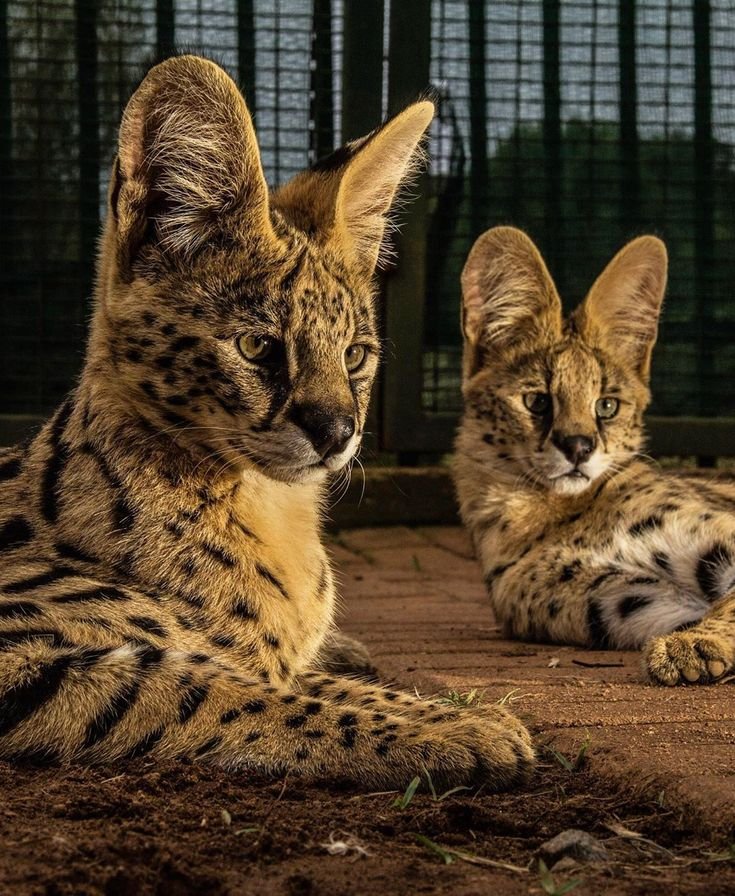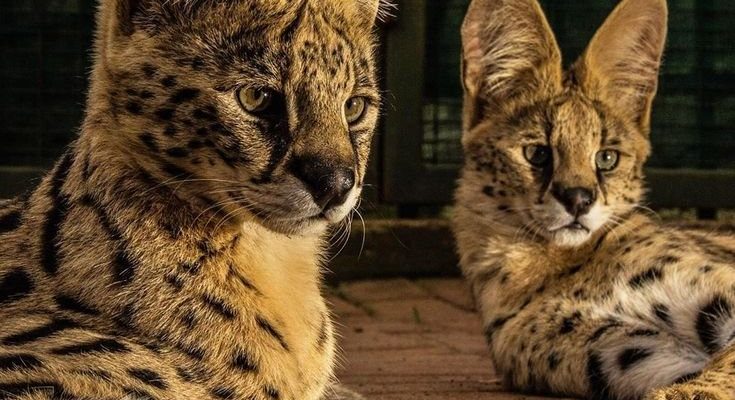
Let’s dive into the world of serval parenting and explore how these enchanting felines manage the trials of motherhood in the wild. Their approach offers intriguing insights into the dynamics of animal behavior and survival.
The Serval’s Home: A Safe Haven for Kittens
To understand how servals raise their young, we first need to look at their living conditions. Servals typically inhabit grasslands, wetlands, and savannas across sub-Saharan Africa. These areas are crucial for several reasons. First, the tall grasses provide excellent cover for both the mother and her kittens, hiding them from potential predators like lions or hyenas.
When it’s time to give birth, the female serval seeks out a secluded spot. This might be a dense thicket or even a burrow abandoned by another animal. The choice of location is vital, as it minimizes the risk of detection. Servals are known to give birth to litters of two to four kittens, and the first few weeks are spent in this protective environment. Here, the mother nurses and keeps her young safe, allowing them to grow and learn without the immediate dangers of the outside world.
Mom’s Role: The Primary Caregiver
Here’s the thing: in the serval world, the mother is a powerhouse. She takes on the sole responsibility of raising the kittens. This means providing food, safety, and education, which is no small feat! During the first few weeks, the mother remains with her young almost constantly. She’ll often leave them hidden while she hunts for food, ensuring they are fed and healthy.
Nursing usually lasts around two months, during which the kittens grow rapidly. As they begin to eat solid food, the mother brings back small prey, like rodents and birds. It’s not just about feeding them; it’s also about teaching them how to hunt. The young servals watch and learn as they see their mother displaying the patience and agility needed to catch prey. Honestly, it’s incredible how much these kittens absorb just by observing their mother’s behavior.
The Kittens’ Development: Steps to Independence
As the weeks pass, serval kittens start to grow more independent. By around six weeks old, they’re ready to explore their surroundings. This is a critical time in their development. You might be wondering why exploration is so important. Well, it’s during these adventures that the kittens learn essential skills they’ll need as adults.
The mother serves as a guide, encouraging them to engage with their environment. She’ll pounce on prey to show them how it’s done, using playful antics to demonstrate stalking and catching techniques. This play is crucial; not only does it teach them hunting skills, but it also helps them develop their physical coordination. The combination of play and practice lays the foundation for their future survival.
Survival Skills: Learning from the Environment
In the wild, servals face numerous challenges. From finding food to avoiding predators, every day is a lesson in survival. The mother teaches her young how to adapt to their environment.
For instance, servals are incredible jumpers, capable of leaping up to ten feet to catch birds in mid-flight. The mother demonstrates this skill, allowing her kittens to witness it firsthand. As the kittens grow, they start attempting these jumps, and while they may not always succeed, each attempt teaches them persistence and resilience.
Additionally, servals are known for their incredible hearing, thanks to their large ears. The mother often helps her kittens hone this skill by encouraging them to listen for faint sounds of movement nearby. This way, they learn to identify potential prey, a skill they will need as they grow older.
Challenges and Threats: Navigating the Wild
Despite their mother’s efforts, serval kittens face many dangers as they grow. From larger predators to human encroachment on their habitats, life in the wild is full of threats. The mother must constantly be on alert, knowing that even a moment of distraction could endanger her young.
Predators like lions or leopards may view the kittens as easy targets. The mother’s instinct is to keep her kittens hidden and secure in the tall grass, using her keen senses to detect threats before they become imminent. This protective behavior is part of a delicate balance in nature, where the survival of the fittest plays a crucial role.
Human activity poses another significant threat as it leads to habitat loss. As grasslands are converted for agriculture or urban development, the servals lose their homes, making it harder for mothers to find safe spaces to raise their young.
Life Beyond Kittenhood: Transition to Adulthood
By the time serval kittens reach six months, they typically start to hunt on their own. This marks a significant transition from dependency to independence. The mother’s role gradually shifts from active caregiver to a more supportive figure, as the kittens practice their newfound skills.
They will often hunt in small groups but eventually begin to establish their territories. This period is crucial for their development, as they learn to navigate the complexities of their environment without their mother’s direct guidance.
Adulthood brings its own challenges, as servals must now find mates, establish territories, and continue the cycle of raising their own young. It’s a beautiful yet tough journey, highlighting the resilience and adaptability of these magnificent animals.
Servals raise their young with a combination of instinct, skill, and love that is truly inspiring. From the moment they are born until they are ready to take on the world, these kittens are nurtured in a way that prepares them for the challenges of life in the wild. The relationship between a mother serval and her kittens is a powerful example of nature’s delicate balance.
Watching them grow from tiny, helpless bundles into agile hunters is a reminder of the cycles that shape the natural world. In every leap and bound, servals are not just surviving—they’re thriving, ensuring that the spirit of the savannah continues on through their young. So, the next time you think about servals, remember the incredible journey these cats embark on to raise their young amidst the wild challenges of their environment.

